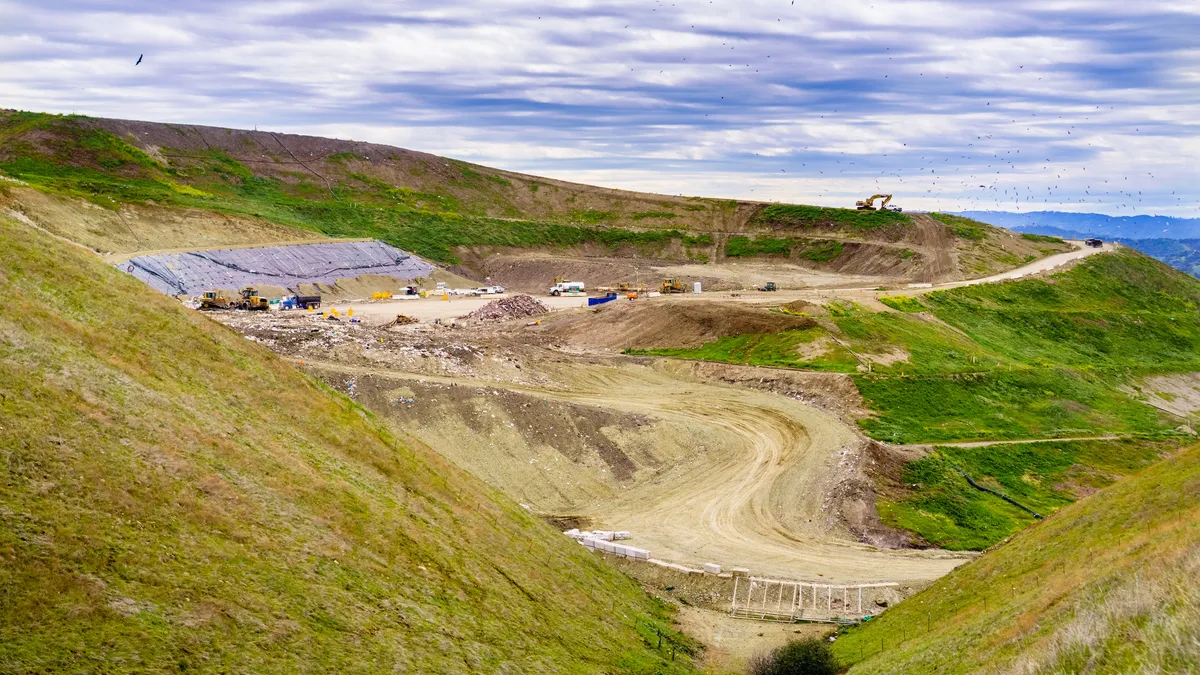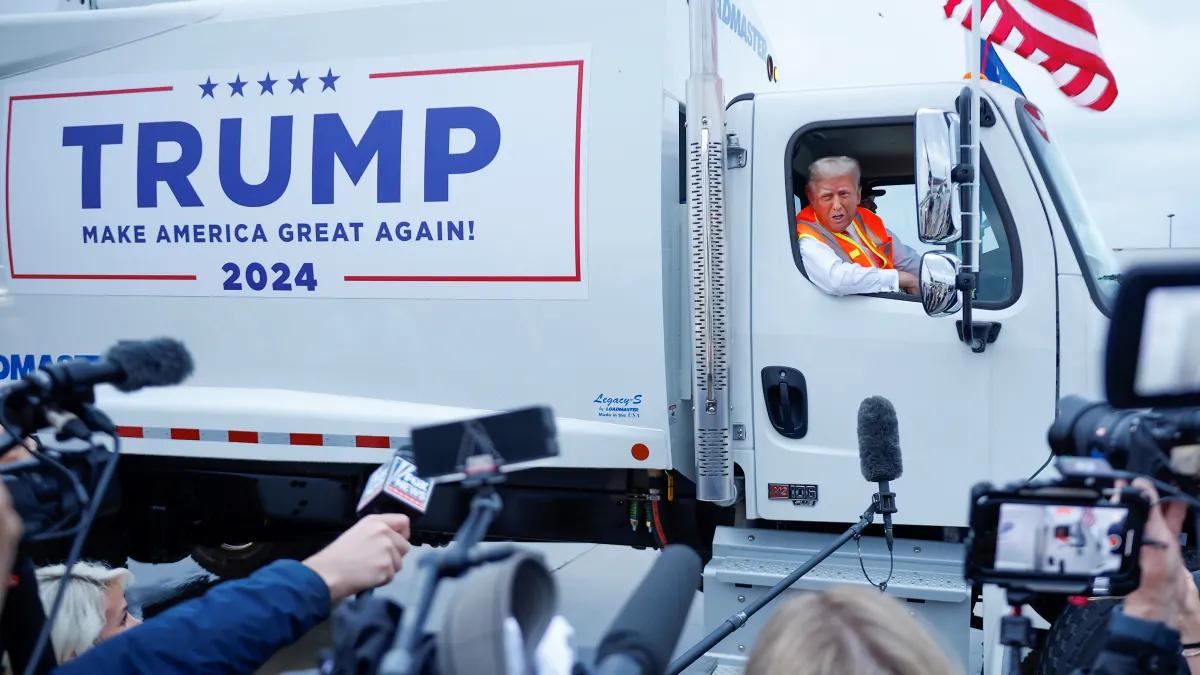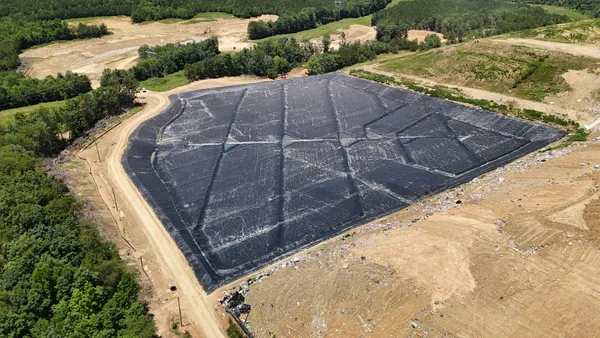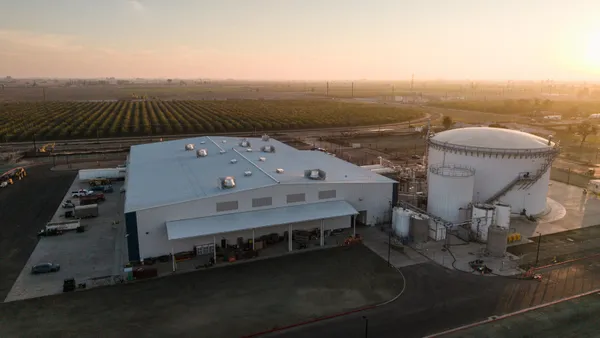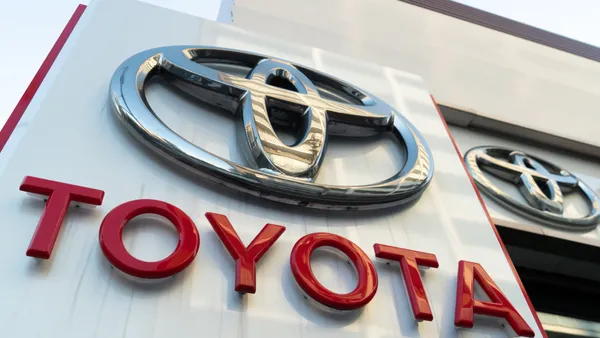Dive Brief:
- The U.S. waste and recycling industry was worth an estimated $91 billion in revenue during 2022, according to data from research and consulting firm Waste Business Journal, up from $82 billion in 2021.
- According to 2022 data, the industry’s five publicly traded companies controlled an estimated 61% of U.S. MSW landfill volume. Local governments controlled an estimated 27%, with the remainder handled by private companies.
- WBJ data from 2021 shows the Northeast remained the only net exporter of waste and the Southeast was the largest net importer. The Northeast once again had the highest average MSW tip fees of any region in 2021, followed by the Midwest — which notably surpassed the Pacific.
Dive Insight:
WBJ’s decades-long dataset is among the most comprehensive in the industry and offers a unique look at the waste sector’s ongoing growth. The firm’s overall industry revenue figure also includes environmental services operations.
Jim Thompson, principal of WBJ, has been collecting this data down to the facility level since the early ‘90s and said “the trend in industry privatization is one that's pretty remarkable.” In 1992, municipal governments controlled an estimated 38% of the sector’s revenue. In 2021, that share was 19%.
Thompson attributes the trend in part to the wave of smaller landfill closures that continued well into the ‘90s due to federal regulations which made operations more expensive. This also had a ripple effect on the privatization of transfer and collection services. Recycling operations have also become larger and more technologically complex over time, with WBJ estimating the average MRF today can handle around 190 tons per day versus 109 tons per day in 2000.
Following the 2020 acquisition of Advanced Disposal Services, WM now accounts for a larger share of U.S. landfill volume and capacity than the entire local government category. When combined with Republic Services, the industry’s top two companies accounted for nearly 50%.

In addition to public companies such as Waste Connections, GFL Environmental and Casella Waste Systems, WBJ data indicates notable volumes were also handled by private companies such as Rumpke Waste & Recycling, WIN Waste Innovations and other regional or local haulers. Market share percentages can be expected to continue shifting due to the ongoing pace of acquisitions in the sector.
The pricing data shared by WBJ for 2021, which already showed notable increases in many regions and the broader U.S., previews a spike that continued in 2022 during what many companies described as a historic year for price increases amid inflation.
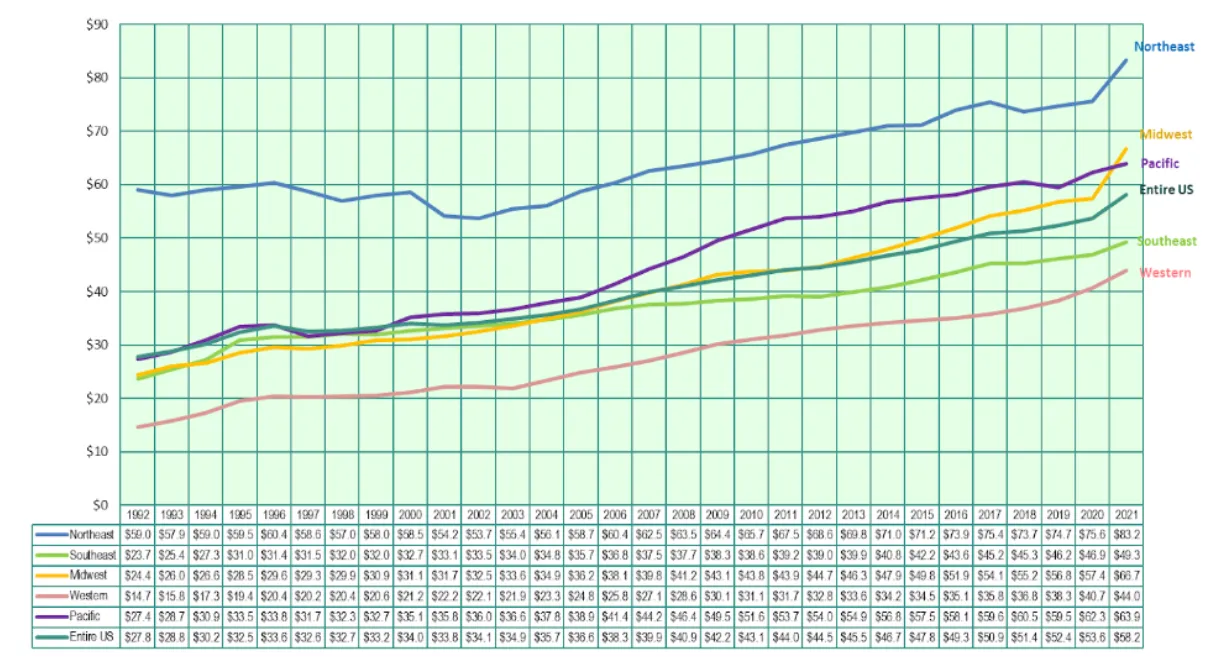
Looking ahead, Thompson said he doesn’t see any signs that the declining municipal share will reverse course as it becomes increasingly expensive to operate modern fleets, MRFs, landfills and other facilities.
Part of this is due to consolidation by major companies. Research from investment firm Raymond James that was shared during October’s Corporate Growth Conference offers a similar picture. In 1996, the industry’s top three companies — Waste Management, Browning-Ferris Industries (now part of Republic) and USA Waste (now part of WM) — accounted for 37% of the nation’s landfill market. In 2021, the top three companies were at 59%.
While the consolidation trend can sometimes be seen as inevitable, Thompson said the waste sector is actually not yet to the level of other sectors where the top three players may control 80% of market share.
“There's no reason to believe that the waste industry would be any exception,” he said, but the ongoing cycle of growth and investment among private companies — especially due to increasing private equity activity — has resisted that trend. "The municipal share has certainly shrunken, but the private companies versus the publicly traded companies — that share has grown."



